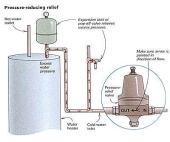Just discovered this. Similar to Fukuoka Natural Farming, with some additions like sustainably incorporating a cow.
"Jeewamritha which has cow dung, cow urine, pulse powder, jaggery and a handful of soil. Jeewamritha is not talked as a fertiliser rather it contains lot of microbes and hence decomposition of the mulch becomes faster and earth worm activity becomes more and land becomes fertile. People who has used Jeewamritha tells that visible changes in the earth worms can be seen within a week itself. Also one good thing is that 1 local cow is enough for 30 acres of land."
http://farming-experiments.blogspot.com/2012/02/subash-palekars-zero-budget-no-till.html
More so than Fukuoka, Palekar speaks about the exploitation of farmers and agriculture, through the economic and judicial systems.
"However, they thought that the farmers should not only purchase the seeds but every commodity from the city. So they established such an exploiter system that the farmers have to purchase these hybrid seeds which will give more yield only after applying the chemical fertilizers. Therefore, the farmers have to purchase both hybrid seeds and chemical fertilizers also. But these hybrid seeds are developed in such a manner that they have no resistance power against insects and diseases. The chemical fertilizers are developed such that they will destroy the soil biota and will make the land barren, loose the resistance power. And as the land becomes barren, the crops grown in it will affect from diseases. Then the farmers have to purchase the poisonous insecticides and fungicides to control the diseases. These chemical fertilizers will make the soil so compact that the farmer has to use tractor for cultivation, as the wooden plough will not work. Thus, more money will come to city from the villages.
Again, they thought that this farmer is so poor that he has no purchasing power. But they were well known that the farmer would purchase even an elephant on credit. Therefore, they thought why not to give them this seeds, chemical fertilizers, insecticides, and tractors on loan. Therefore, they started banks, credit societies. A well-planned exploiter system was developed to commit the farmers to purchase the seeds, fertilizers, insecticides, tractors etc known as Green Revolution."
http://palekarzerobudgetspiritualfarming.org/








